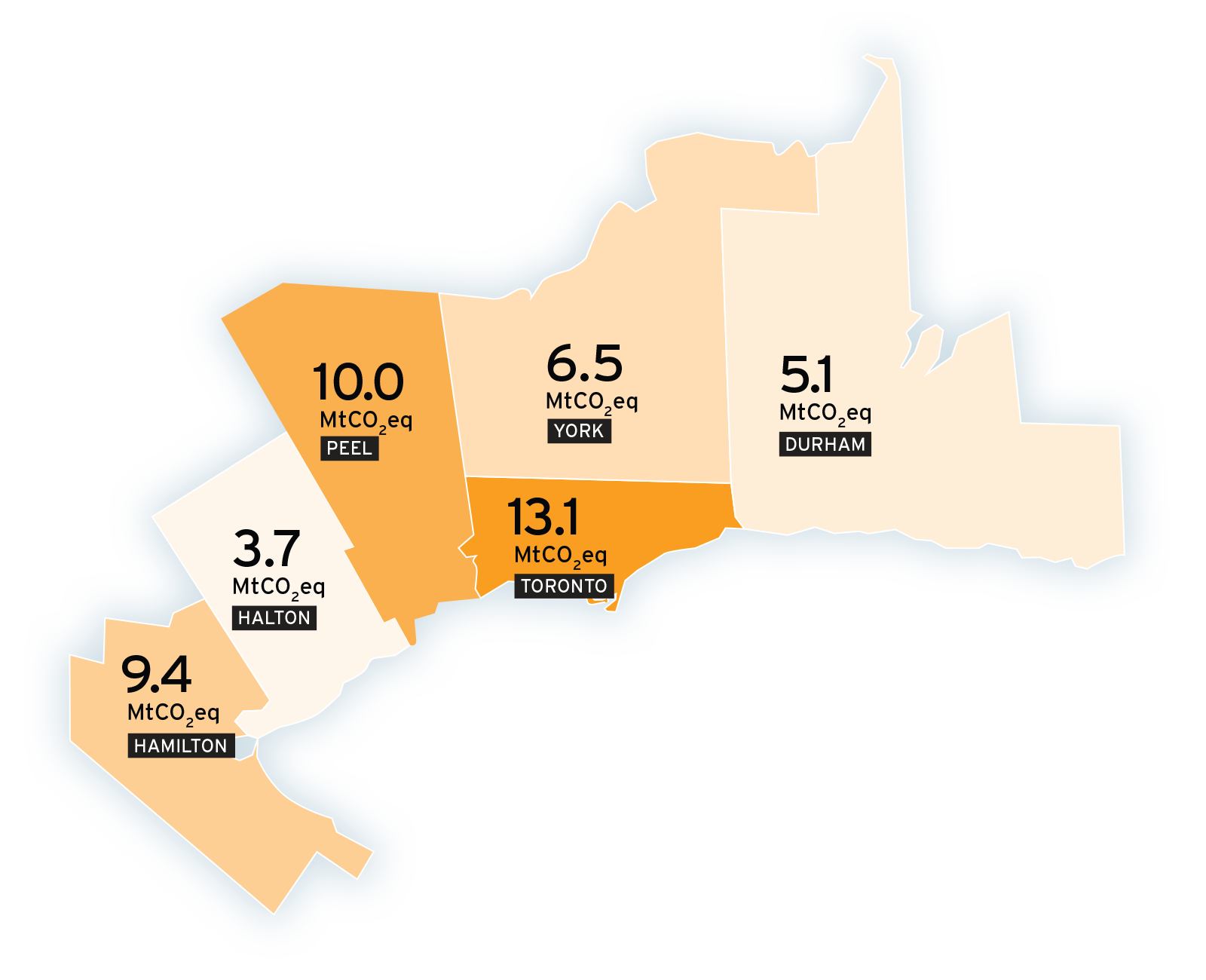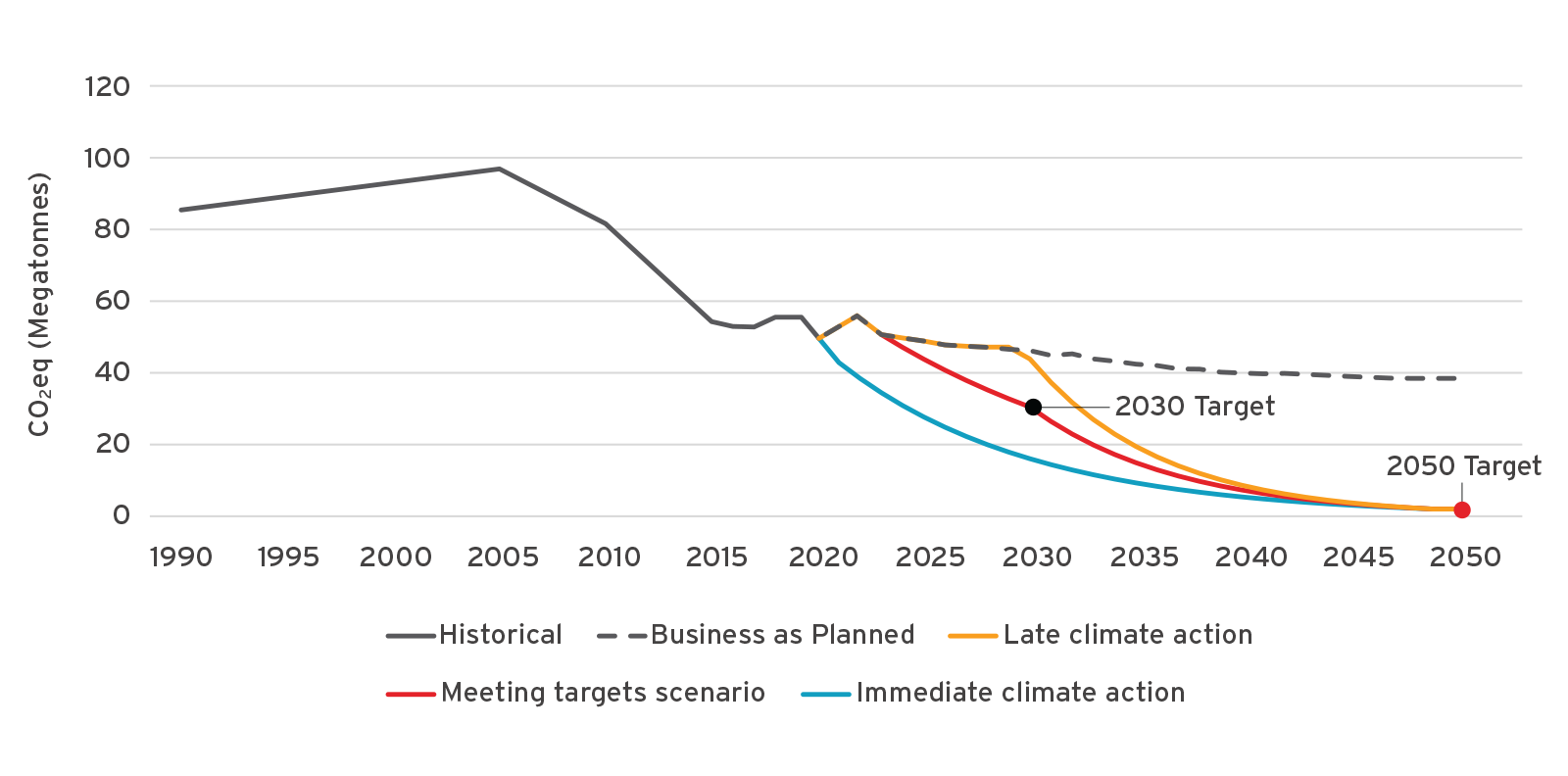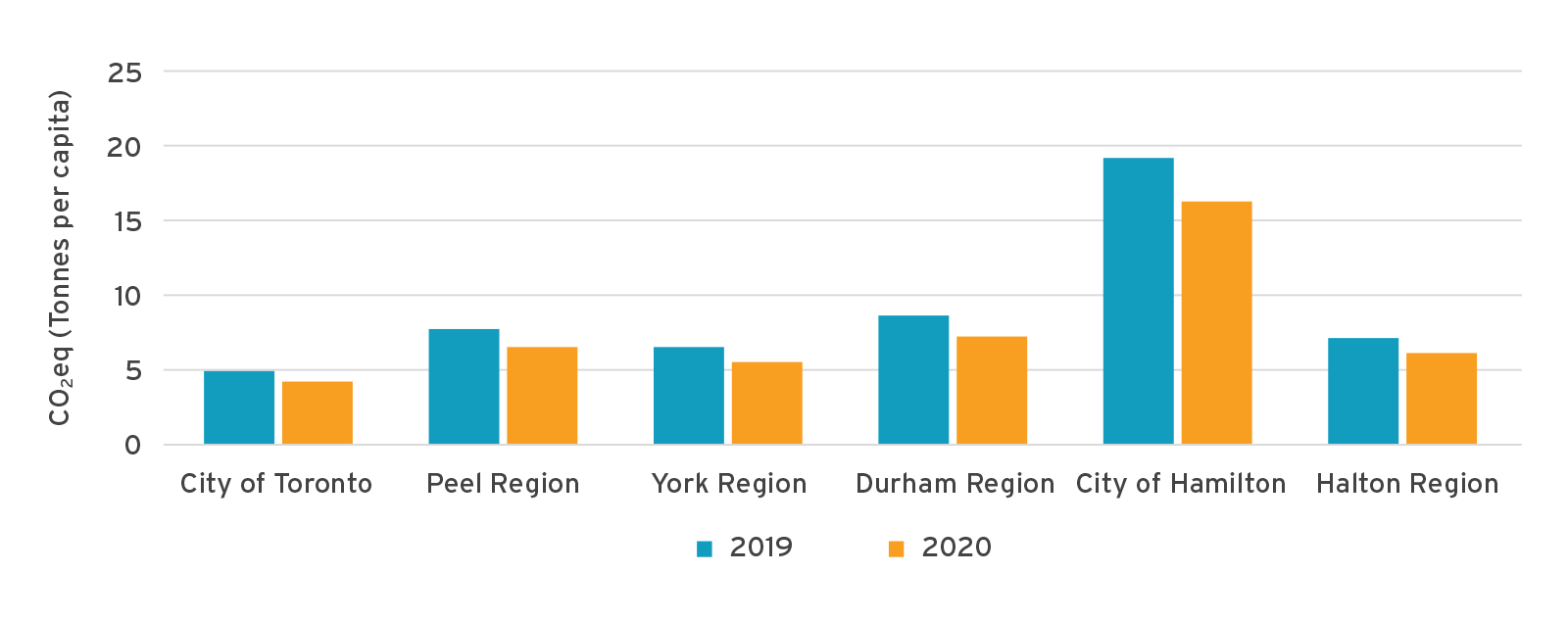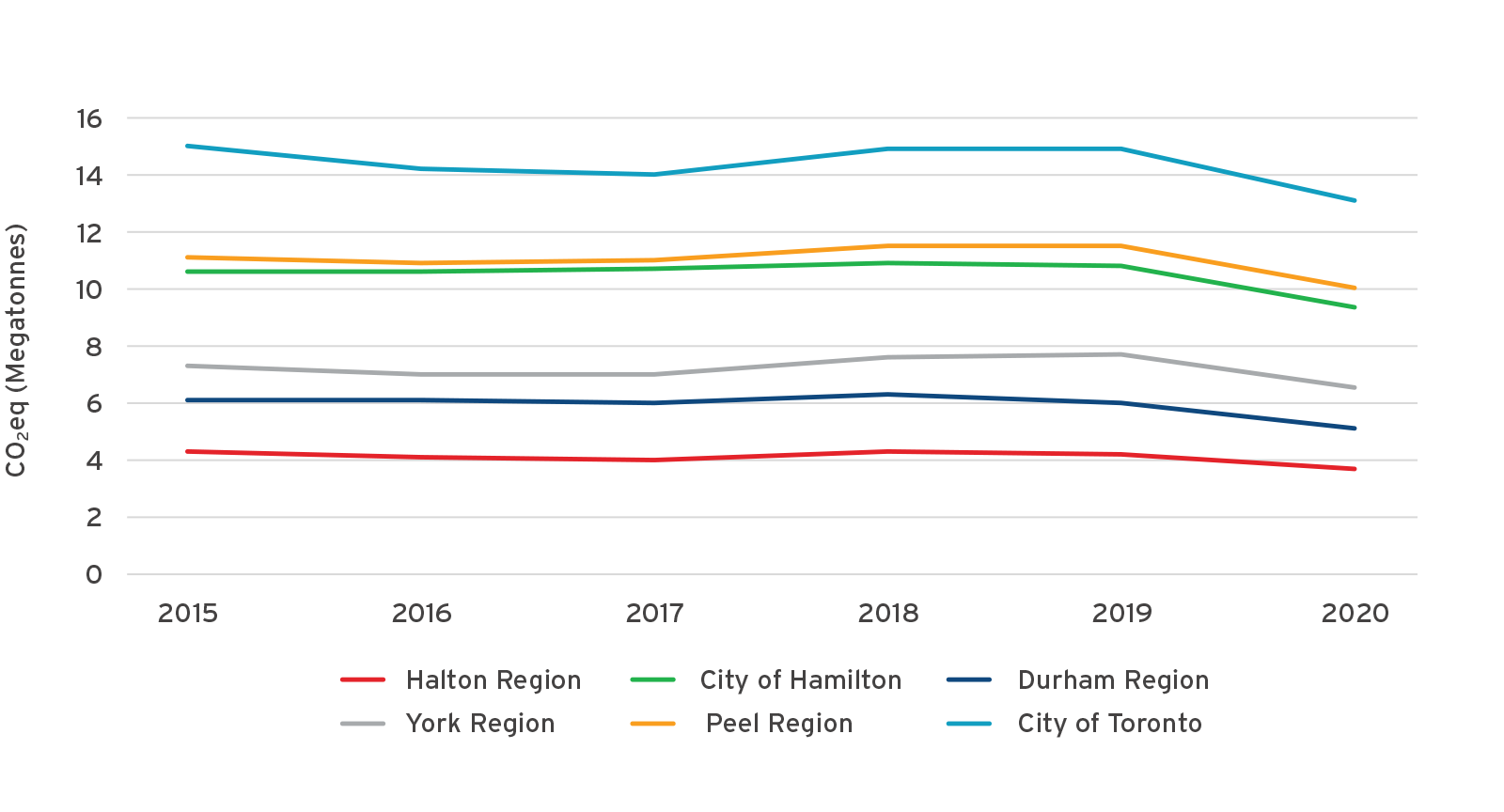GTHA carbon emissions are on the rise

Report Summary
Emissions in the GTHA decreased by 0.4% in 2019 and 13.4% in 2020, due to massive pandemic disruption and a warm winter. Five-years of data shows a relatively flat line – we’re now about 2.0% above 2015 emissions, notwithstanding the 2020 anomaly. The data reveals that we are not on track to reduce emissions in line with local or international 2030 climate commitments.
2020 GTHA carbon emissions:
47.8 million tonnesThis is equal to
44% of Ontario's carbon emissionsand an average of
5.0 tonnes of carbon emissions per capitaLong-term trend – where we are and where we need to be

Emissions actually rose 2% between 2015 to 2019, digging the region into a deeper hole. While 2% sounds like a relatively harmless increase, to get on track to net zero by 2050 the region should be achieving sustained annual reductions of at least 7% and counting. Emissions fell in 2020, but only due to the unprecedented – and temporary – impact of the pandemic on transportation demand and industrial output.

Natural gas consumption decreased 10.0% due to a warmer winter and electricity consumption increased 2.1% in 2020.

Transportation emissions went up 1.0% in 2019 and down 20.7% in 2020.

Industrial emissions decreased 1.5% in 2019 and 13.0% in 2020.
Where are the emissions coming from?

Buildings and transportation continue to be the biggest emitters in the GTHA.
Carbon emissions by region in 2019 and 2020

Emissions profiles are similar across the region, with the exception of Hamilton’s high industrial emissions, and agriculture in Durham.
Change in total emissions by region from 2015 to 2020

Getting to net-zero in the GTHA
The carbon challenge is solvable. Achieving a net-zero GTHA by 2050 requires eliminating most of the 47.8 million tonnes emitted annually and offsetting the emissions that cannot be eliminated. What’s needed is a massive acceleration in climate action and investment that engages government, businesses, utilities, citizens, and the community at an unprecedented scale. We need to break through the inertia that is paralyzing the region’s climate emergency response.
Three Enabling Policy Priorities

Buildings
Advance net zero-ready new buildings, develop energy performance standards for existing buildings, procure all cost-effective conservation of natural gas.

Electricity
Phase out gas fired electricity and modernize the grid as soon as possible. Procure electricity conservation.

Transportation
Implement Zero Emissions Vehicle mandate, adopt the federal Clean Fuel Standard, and invest in clean transportation infrastructure.
Report Contact: Maryam Shekarrizfard, mshekarrizfard@taf.ca
Media Contact: Julie Leach, jleach@taf.ca
